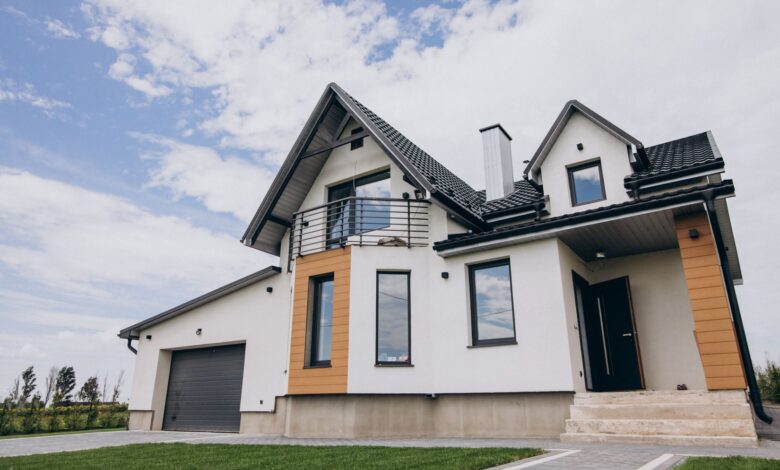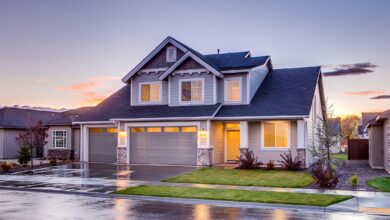Why 80 Million Homes in the UK Need New Windows: A Statistical Approach

In our quest for a sustainable future, a report from the Glass and Glazing Federation (GGF) and British Glass delivers a startling statistic: an astounding 80 million home windows across the UK must undergo replacement to align with net-zero objectives.
Ambitious yet necessary, installing uPVC windows, aluminium windows, or other window styles promises not just a cutback in emissions, akin to taking 1.88 million cars off the roads, but also echoes a broader push for enhanced window glazing and window installation standards.
Today, our nation’s homes are besieged by heat loss, trailing all other Western European countries and faring three times worse in energy efficiency than counterparts like Germany.
This alarming deficiency is imperative for urgent action, particularly given that a quarter of the UK’s carbon footprint is etched by the residential sector alone. We’ll navigate the significance of new windows for homes, weighing the merits of options from uPVC to aluminium windows. We’ll also discuss window replacement costs and how much replacing windows can impact overall energy savings.
Our journey will reveal why investing in double-glazing windows and exploring replacement windows costs isn’t just good for the planet—it’s essential for the warmth and wallet of every homeowner.
The origins of the term “window” can be traced back to the Old Norse word “vindauga,” which literally translates to “wind eye”. This etymology hints at the primary function of early windows: to let in air and light. Initially, windows were simply unglazed openings in the roof, serving the basic need for daylight.
Before the advent of glass in ancient times, materials such as animal hide, cloth, or wood were employed to cover these openings. In the Romans, around 100 AD in Alexandria, that glass was first used in windows. However, this innovation was only gradually widespread, especially in England, where glass windows only became common in the homes of ordinary people in the early 17th century.
The crown glass came into use in Britain in 1674, with molten glass blown into a bubble, pierced, and spun into a sheet.
Throughout history, the design of windows has also evolved, reflecting changes in architectural styles and technological capabilities. Initially, windows tended to be horizontal, but after 1680, a shift toward vertically proportioned windows emerged. This transition was accompanied by lancet windows in Western European church architecture, paving the way for intricate tracery and the development of elaborate stained-glass windows.
Today’s glass windows come in various types, including laminated, obscured, tempered, and Low-E glass, each serving different functional and aesthetic purposes. The continuous evolution of glass windows underscores their integral role in architecture and their significant impact on energy efficiency and sustainability in modern living.
In the realm of technological advances in glass windows, we observe a significant push towards innovation to enhance energy efficiency, sustainability, and user convenience. These advances are not merely incremental; they represent a paradigm shift in how we interact with the environments of our homes and workplaces.
China has emerged as a dominant force in the global window manufacturing landscape, leveraging its extensive manufacturing capabilities. The country benefits from cost advantages and vast supply chains, making it a central hub for production.
The United States, on the other hand, has focused on delivering high-quality craftsmanship in window production. There is a significant emphasis on integrating advanced technology and adhering to stringent industry standards, particularly in the realm of energy-efficient windows
However, Germany is known for its precision engineering and prioritises innovation in its window manufacturing processes. German products are often associated with energy efficiency, sound insulation, and long-lasting durability.
The global market value of glass bottles and containers is on a steep incline, with forecasts predicting a rise to £75.26 billion by 2029.
Glass packaging is experiencing a renaissance as a sustainable choice, with the industry’s market value expected to jump from £43.31 billion in 2022 to £68.92 billion by 2032.
Container glass commanded a significant revenue share of over 45.0% in 2021, driven by its demand in the packaging sector. The packaging segment held the largest revenue share of over 35.0% in the same year, with glass being favoured as an economical and environmentally friendly alternative to plastic.
These statistics paint a vivid picture of the global demand and production of glass windows, highlighting the importance of continuous innovation and sustainability in the industry. As we consider the necessity for new windows in UK homes, understanding these global market dynamics is crucial for grasping the broader context of supply, demand, and environmental impact.
Low-emissivity (low-e) glass reduces heat loss and gain with a special coating that reflects heat back into the room, thus improving the energy efficiency of windows and potentially reducing heating bills by up to 20% annually. Windows installed today are up to 50% more efficient than older double glazing and 70% better than single glazing, demonstrating the leaps in performance over the past two decades.
Remarkably, glass is 100% recyclable, maintaining its quality and purity through endless recycling processes, thereby conserving natural resources and reducing landfill waste. The construction sector is a significant energy consumer, with glass facades contributing to elevated heating, cooling, and lighting demands due to their thermal and optical properties.
Employing recycled glass in production is more eco-friendly, requiring up to 40% less energy, thus underlining the importance of recycling initiatives. However, recycling rates exhibit geographical disparities: 33.9% in the US, 56% in Australia, and an impressive 90% in Europe, indicating a potential area for global improvement.
Adopting double glazing and high-performance glass, alongside insulating frames, presents a sustainable choice, cutting energy use by up to 40% and saving up to 4 tons of CO2 emissions annually per household.
Triple glazing surpasses double thermal performance, significantly reducing heat loss and surpassing building regulations for new dwellings. However, it’s essential to weigh the higher cost against the potential energy savings, as triple glazing is more expensive but not always proportionately more efficient.
Utilising low-emissivity coatings, inert gas between panes, and efficient frame materials, modern windows minimise unwanted heat loss in winter and heat gain in summer, contributing to a balanced indoor climate year-round.
Regarding cost implications, replacing single-pane windows with energy-efficient alternatives can lead to annual savings ranging from £101 to £583, depending on the specific circumstances and existing window types. Similarly, upgrading from double-pane windows can save £27 to £197 per year. A typical home replacing single-pane windows with energy-efficient ones can save up to 4 tons of carbon dioxide emissions annually, aligning personal financial benefits with broader environmental goals.
The UK’s Green Homes Grant scheme exemplifies governmental support, offering vouchers covering two-thirds of the cost of energy-efficient improvements, up to a maximum of £5,000, thus making the transition more accessible for homeowners.
While the upfront cost of energy-efficient windows varies — uPVC windows (£371 – £972), aluminium windows (£210 – £1,615), timber windows (£1,147 – £1,829), and composite windows (£2,046 – £3,596) — the long-term savings in energy costs can be significant, up to 40% annually. This rating system, ranging from “E” (least efficient) to “A++” (most efficient), helps consumers understand the energy performance of windows, guiding more informed decisions that balance cost with energy efficiency.
Now a critical structural element, oversized glazing allows residential designs to incorporate significant elevations of minimally designed glazing, including curved and triple-glazed panes. The utilisation of bright-coloured frames, like the Dulux colour of 2022 “Blue Skies™”, to brighten up minimal designs.
In contemplating the future outlook of the glass windows, the return on investment (ROI) for window replacement is compelling, with an increase in house value by approximately 74%, showcasing the substantial financial benefits of such upgrades.
Modern windows, especially double or triple-glazed ones, can dramatically lower energy bills by improving thermal insulation. In addition, it offers superior noise insulation, creating a more serene and quiet indoor environment. Advanced locking mechanisms and robust materials enhance homes’ security, providing homeowners peace of mind.
In this context, the decision to invest in new windows transcends mere aesthetic enhancement, embodying a commitment to environmental stewardship and long-term economic savings. For those considering such upgrades, delving deeper into the myriad benefits and available options is crucial to informed decision-making.



